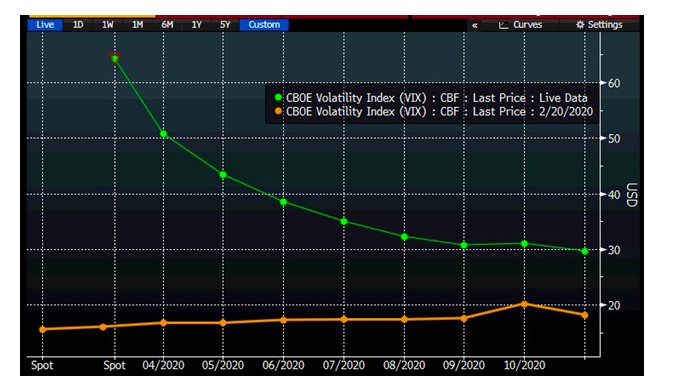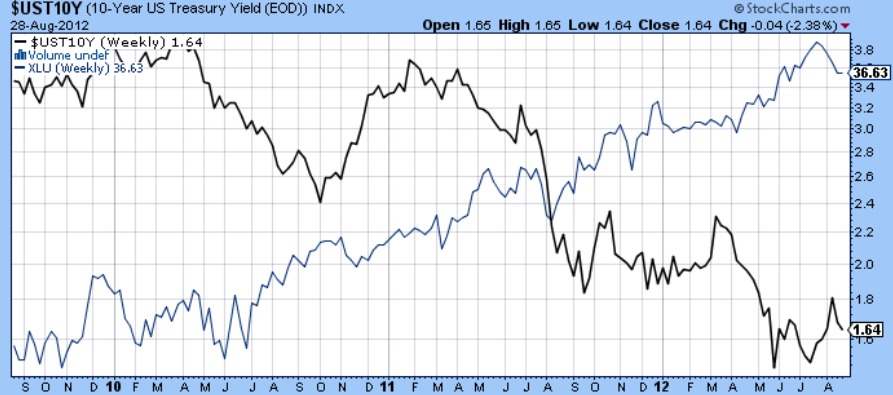By Steve Sosnick, Chief Strategist at Interactive Brokers
Various people, in the media and elsewhere, have asked me why the CBOE Volatility Index (VIX) remained so stubbornly high despite the market’s sharp rebound this week. The short answer is: math.
The confusion arises primarily from those who view the VIX as the market’s fear gauge, rather than its actual purpose as an indicator of the market’s best estimate of volatility in the S&P 500 Index (SPX) over the next 30 days. If you’ve suffered from that confusion you’re not alone, as that is a very common perception. But let’s clear up that confusion once and for all.

I explained the topic in depth in last weekend’s Barron’s, which we linked here.
In the article, I explain that volatility is usually expressed in annualized terms, which is of little value to those who utilize options with expirations of less than a year. That comprises the vast majority of available options contracts.
Rethinking Volatility
The reason for expressing volatility that way is somewhat archaic, stemming from the early adoption of the Black-Scholes options pricing model. It was a groundbreaking academic development, in many ways responsible for the widespread adoption of derivatives, but it utilizes annual volatility and the practice of expressing volatility in annualized percentage terms has persisted ever since.
The problem is that volatility is actually calculated on a daily basis, then converted to the annualized numbers we usually see. The measurement of volatility derives from the daily moves that a security makes. The dispersion of daily returns over a period of time allows us to calculate the standard deviation of that security.
Relative Riskiness
Standard deviation is incredibly useful, as it allows us to compare the relative riskiness of two securities that may have similar average returns. The one with a higher standard deviation would display a higher historical volatility, and its options should be priced higher. Think of it this way: the stock with a higher standard deviation, and thus a higher historical volatility, is more likely to reach a given strike price before an option’s expiration than its less volatile counterpart.
There is an easy way to convert the commonly displayed annualized volatility measures back into their more relevant daily counterparts – divide by the square root of business days in a year, which happens to be just about 16. The “Rule of 16” should become second nature to anyone who utilizes options.
It is also important to realize that volatility counts no matter whether the move is up or down. We are conditioned to expect that down moves are sharper than up moves, but this week’s activity proves that is not always the case. While it is true that implied volatilities and the VIX tend to rise during riskier times, that is often more a reflection of traders’ risk aversion than the actual moves that underlie the calculations.
If we look at the VIX Index at its current level of 64 (as I write this), a quick calculation shows that the options market is anticipating roughly 4% daily moves over the coming 30 days (64 / 16 = 4). Does that seem unreasonable in light of a market that has been moving 3-6% on a daily basis? Traders can disagree whether this level of volatility is likely to be sustained over the next 30 days, but they would acknowledge that the current level of the VIX is sensible in light of recent movements.
Declining Volatility
Looking ahead, we can use VIX futures to see the market’s best estimate of future volatility in the coming months. The green line in the graph below shows the level of current VIX futures trades. We can see a steady decline over the coming months, albeit with a slight bump around the November election (if you wonder why that bump is in October, remember that the VIX Index is a 30 day look-ahead).
It certainly is reasonable to expect that volatility will ebb over the coming months – it is very difficult to imagine this current market environment persisting unabated for weeks, let alone months – but this is by no means an ironclad prediction.
If you need a reminder of how the markets can get it wrong, look at the orange line below. That shows the levels of volatility predicted by the VIX futures market just 5 weeks ago. Blindsided, no?

Source: Bloomberg
Photo Credit: bgwashburn via Flickr Creative Commons
This publication may contain forward-looking assessments. These are based upon a number of assumptions concerning future conditions that ultimately may prove to be inaccurate. Such forward-looking assessments are subject to risks and uncertainties and may be affected by various factors that may cause actual results to differ materially. We do not assume any duty to and do not undertake to update forward-looking assessments.
DISCLOSURE FROM INTERACTIVE BROKERS
The analysis in this material is provided for information only and is not and should not be construed as an offer to sell or the solicitation of an offer to buy any security. To the extent that this material discusses general market activity, industry or sector trends or other broad-based economic or political conditions, it should not be construed as research or investment advice. To the extent that it includes references to specific securities, commodities, currencies, or other instruments, those references do not constitute a recommendation by IBKR to buy, sell or hold such investments. This material does not and is not intended to take into account the particular financial conditions, investment objectives or requirements of individual customers. Before acting on this material, you should consider whether it is suitable for your particular circumstances and, as necessary, seek professional advice.



